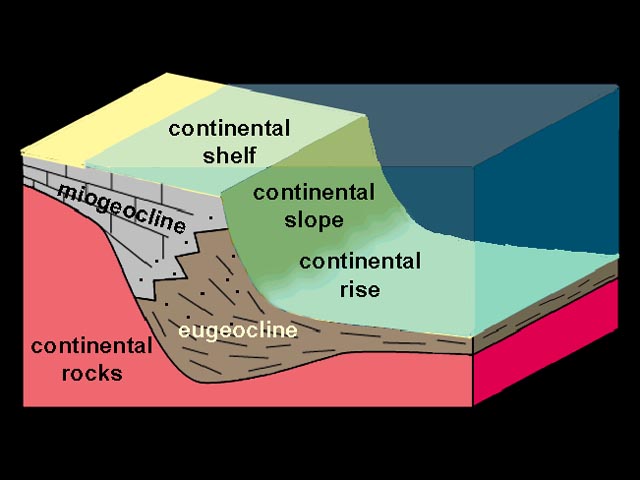
Plate Tectonics Theory Development (Part 1)
Plate tectonics theory is a relatively new theory in geology, but it is very important because it combines several older hypotheses and answers some very old questions in geology. How are mountains like the Appalachians formed? Why do the coastlines of South America and Africa seem to match? Why are identical fossils found on opposite sides of oceans?
1. Geoclines
Geoclines
Geologic puzzle: How do folded mountain belts like the Appalachians form? In the 1850s, American geologist James Hall proposed that the Appalachian Mountains began as a long, narrow, thick pile of sediment deposited along the edge of the continent. Later, the sediments were deformed and uplifted.
• The basins of sediments formed along the edges of continents came to be known first as geosynclines, then later as geoclines.
• The theory became very popular, but was incomplete because no one knew how the geoclines could become deformed and uplifted to create mountains.

The geocline contains the miogeoclinal and eugeoclinal sediments. The miogeoclinal sediments are shallow water rocks such as limestone and sandstone. Eugeoclinal deposits are deep water sediments such as shale, and also include volcanic rocks. (Diagram by Phyllis Newbill)